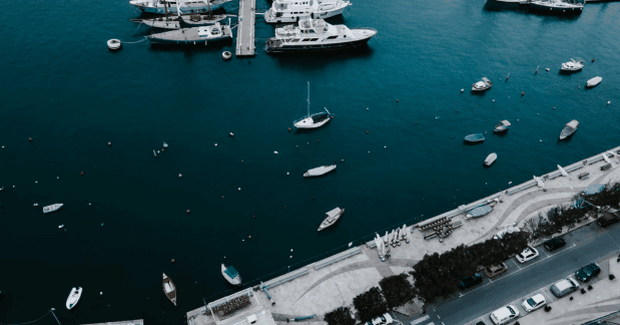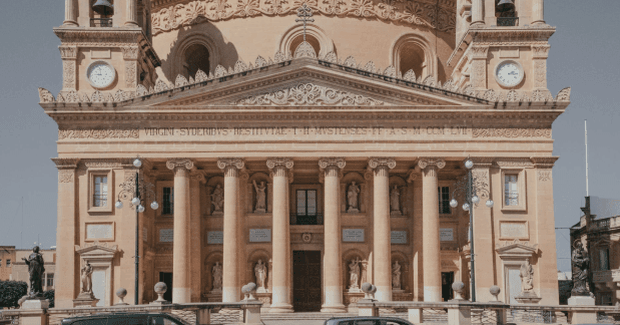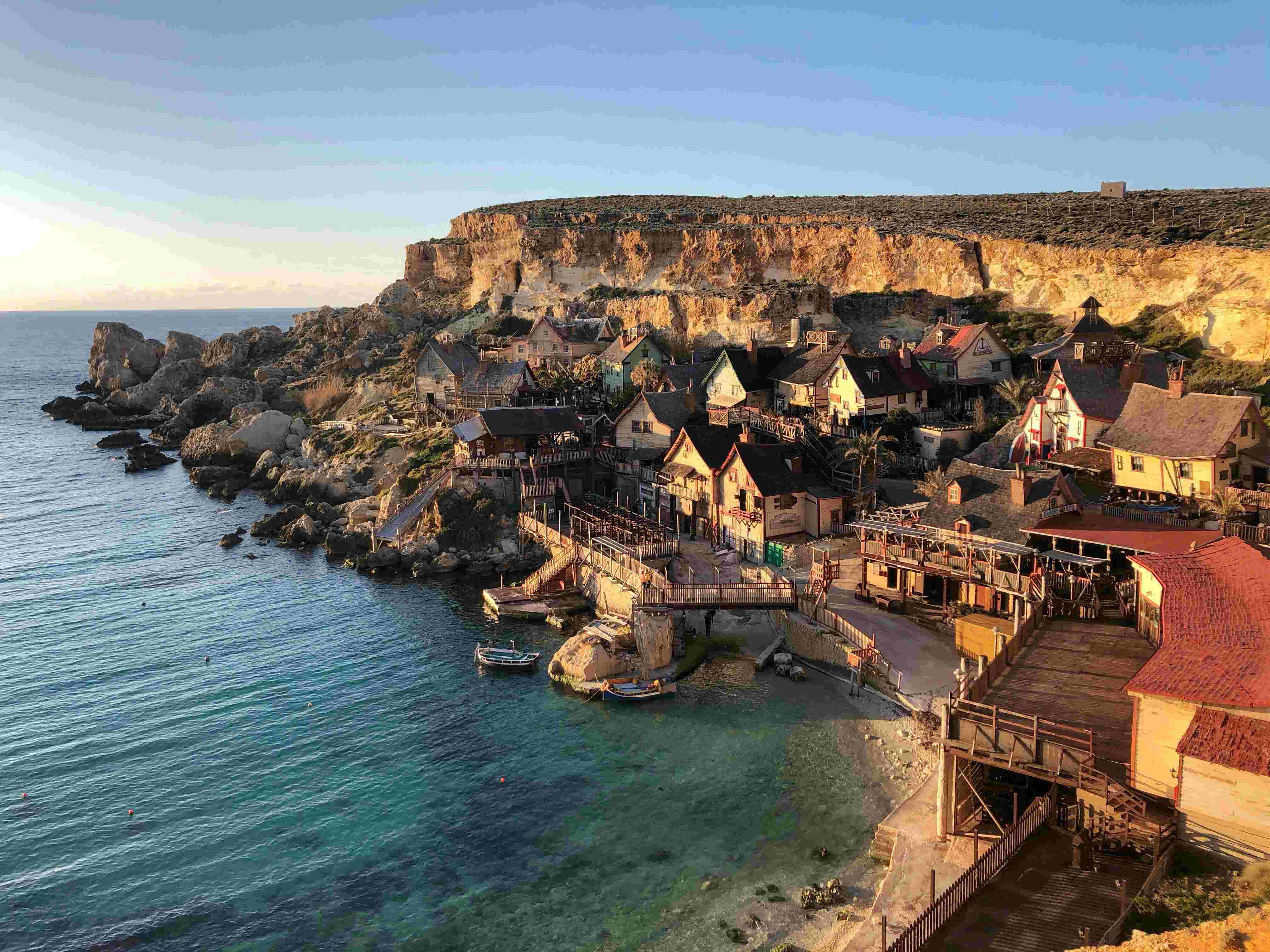Malta Digital Nomad Visa

Quick Visa Facts
Visa length N/A
Possible to extend? N/A
Who can apply? N/A
Minimum Income Requirements N/A
Time for visa applications N/A
Want to know if you can apply?
Complete a visa quiz and see if you qualify!
Quick facts about Malta
On the Mediterranean Sea, three captivating islands lie South of Italy, between Sicily and North Africa. Among them are Gozo, Comino, and the most outstanding, Malta. Despite being small with only about half a million citizens, Malta is an attractive and luxurious option for ex-pats, tourists, and digital nomads.
Capital Valletta
Form of Government Parliamentary Republic
Population 525,285
Climate Mild climate
Language Maltese and English
Currency Euro (€)

4 people in Malta!
Join the community of remoters!
Living in Malta as a digital nomad
Malta has several attractions, making it ideal for digital nomads. You will experience great weather, several outdoor leisure activities plus accessible and decently affordable transportation. But Malta is not as cheap as other digital nomad hotspots, so be prepared to pay United States prices when staying in the country.
Malta weather is sunny all year round with winter months of 20°C. The pleasant weather is great for fun land and water-based activities. Land lovers can visit the beaches, palaces, museums, churches, and landmarks. For water lovers, you can go snorkeling, diving, or surfing. More so, there are many restaurants, bistros, and cafes with exquisite and mouth-watering cuisines.
Whether you want to share a ride or ride solo, there is a transportation option for you. Malta has a network of buses, taxi services such as Bolt and Ryde, electric car-sharing with GoTo, and electric scooter sharing.
Attractions and best places to visit
If you’re heading to Malta as a digital nomad, it doesn’t need to be all work and no play. Make sure that you don’t miss out on these amazing Malta sites:

Medieval Hilltop Town of Mdina (UNESCO World Heritage Site)
The town of Mdina is recognized as a UNESCO World Heritage site. It is known for its main gate, car-free streets, and sandstone buildings. You should visit St. Paul’s Cathedral, the Palazzo Vilhena that is the National Museum of Natural History, and the Palazzo Falcon Historic House Museum.
Hal Saflieni Hypogeum
Its archaeological brilliance landed it on the UNESCO World Heritage site list. It is a cemetery with three-level chambers carved from limestone and was used for burials and consulting oracles. Some artifacts found at this site include The Sleeping Lady and stone figures of birds. They are in the National Museum of Archeology in Valletta.
Prehistoric Tarxien Temples
The Tarxien Temples are another UNESCO heritage site. They are popular for their four megalithic structures with fascinating spiral structures. They were used for animal sacrifice proven by the remains of animal bones, killing tools, and altars
Blue Lagoon, Island of Comino
It offers crystal clear water with white sands where you can either swim or sunbathe. Since the core of the lagoon is roped off to boats, you can enjoy your activities without any fear of interruption from intruding boats. For a relaxing time at the beach, there are umbrellas and chairs for rent.
The Blue Grotto
The blue and serene waters were claimed to host sea nymphs that charmed sailors. Of the six caves you can visit on fishing boats called luzzus, the Blue Grotto is the largest one with cobalt-hued water that emits a blue shine.
Digital Nomad Hotspots
If you are looking for a variety of cultural events, Valletta is the place to be. Its cultural vibrancy gave it the title of the European Capital of Culture. It is popular for 28 historical churches, inns of the Knights of St. John, fortresses, and national museums. For great views, you can visit the Upper Barrakka Gardens that peeks into the Three Cities, the Grand Harbour, and Fort St. Angelo. There are a couple of hotels within and not too far outside the city walls.
Sliema is the commercial capital of Malta because of its plethora of shopping options, fine and casual dining spaces, and exclusive and luxurious hotels. The accommodation is for those with a medium to high budget, so keep that in mind when moving to this city. That said, Sliema is the most popular city in Malta for digital nomads for its fast internet and high safety rating.
San Gwann has more affordable accommodation. Its historical and cultural sites are great to visit. On your visit to San Gwann, you will come across the cart ruts. They represent a transport facility used by the agrarian societies that used the area for farming. There are also scattered chapels with the most popular being the cave chapel of San Leonardo known today as the Chapel of Annunciation. Other chapels include those dedicated to St. Philip and St. James
Cost of Living
The cost of living is quite high in Malta, but comparable to most Western European countries. You can expect to pay upwards of $3000 per month to live comfortably, regardless of which area of the island you live on. Costs are slightly higher in the digital nomad hubs of Sliema and St. Julian, but you can find some cheaper options in towns like San Gwann. As a general rule, the more central you are, the more you can expect to pay. One thing that is relatively inexpensive in Malta is public transportation, with 30-day bus tickets costing only about $28.
Digital Nomad Essentials
For digital nomads, the internet is highly important. Malta has both broadband and mobile internet, with the option of 5G if you need it. You can choose between multiple service providers including Epic, Melita, and GO.

Their packages:
GO offers free installation with speeds ranging from 35-1000MBps.
Melita charges two kinds of installation fees depending on the package. For the 24-month contract, you pay €25. For a per month contract, you pay €75. The subscription fee will range between €20-€40.
Epic is the most popular service provider with a monthly subscription fee of €30 and that increases depending on the packages.
Malta also has some great coworking spaces which offer on-site coffee, single or group working spaces, and high-speed WiFi. Some of the popular workspaces in Malta include the Hub Workspace, 230works, and SOHO office space.
Or if cafes are more your thing, check out Choco Kebab café, Dr. Juice, and Eeetwell which offer different drinks with great WiFi in case you have your meetings there. Big names such as Starbucks and Costa are also available.
Need help applying?
Anna - Malta Immigration Lawyer
Visa Overview
There are currently three visa options for those wanting to travel to Malta; the Short Stay Visa, the Long Stay Visa, and most recently, a Digital Nomad Visa.
The first option is the short stay/C visa. If you are not an EEA national, then you need a Schengen Visa. The Visa is valid for a maximum of 90 days. If you have been visiting other European countries with the Visa, you must subtract those days from the 90 days to know how long you can stay. You are allowed single, double, and multiple entries.
If you are employed by an employer in Malta, you can apply for a long stay/D work visa. You will need a work permit to apply for this visa. It allows you to stay and work in Malta for longer than three months.
But what we will be focusing on is the digital nomad visa. The digital nomad visa was introduced in June 2021 for digital nomads to stay longer in Malta. It allows digital nomads to stay in Malta for an entire year.
It was introduced in June 2021 for digital nomads to stay longer in Malta. It allows digital nomads to stay in Malta for a year.
*A note about current travel restrictions – Before entering Malta you must fill in the Public Health Travel Declarationadn Passenger Locator Form. Covid-19 entry requirements will then depend on your vaccination status and country of departure.
Need help applying?
Anna - Malta Immigration Lawyer
Who Can Apply for the Digital Nomad Visa for Malta

You can apply for a digital nomad visa for Malta if you’re a national of a third country (non-EEA nationals) who:
Work for a foreign registered employer
Are a shareholder/partner in a foreign registered company
Freelancers/ consultants to clients with permanent establishments in foreign countries.
You must have a monthly income of at least €2,700 to be eligible for the visa.
How to Apply for the Malta Digital Nomad Visa
To apply for the digital nomad visa for Malta you must submit the required documents to any consular office of Malta or any authorized place for processing residence permits in the country where you are a permanent or temporary resident. You cannot currently apply online.
Documents required to apply for the digital nomad visa in Malta
Application Form N1
Application Form N2 (if applicable)
Application Form N4 General Data Protection Form
Letter of Intent
International Passport
Employment contract and official tax documentation in case of employment
Documentary evidence of self-employment
Documentary evidence of all freelance activities in the case of freelance
Europass CV
Bank statement
Local or international health insurance policy
Health declaration
How much does it cost?
The one-year, digital nomad visa for Malta costs €300.
Need help applying?
Anna - Malta Immigration Lawyer
Paying Taxes on a Malta Digital Nomad Visa
There has been some controversy about the taxation of people staying in Malta on a digital nomad visa. The reason for this was that the Residency Malta Agency claimed that you don’t owe any taxes in Malta if you come there on the digital nomad visa.
However, when taking a look at the applicable tax legislation, no such exemption was provided for. This was also confirmed by the Maltese tax authorities. Although Malta is looking to resolve this issue. Nevertheless, this would – at the moment – basically mean that the general tax rules apply to digital nomads living in the country on the DNV.
Malta’s tax system knows a domiciled taxpayer, a ‘normal’ tax resident and a non-resident taxpayer. Most people will not (immediately) qualify as a domiciled taxpayer as this takes years. Yet, if you stay at least 183 days in Malta, you will become a tax resident. Consequently, taxes will be due in Malta.
Yet, if you will actually have to pay taxes will also depend on your personal circumstances. Therefore, it is best to look for a personal assessment. If you want to discuss your personal situation, you can book a call with our tax advisor.
Timeline for Applying

The first step in your application is to fill out the N1 and N4 forms, and submit them along with your letter of intent, which should explain the reasons you intend to move to Malta. You’ll also need to submit all the documents listed above. You cannot currently apply online, so you will need to go in-person to a consular.
After you’ve submitted your application it will take around 30 days to receive approval.
Malta is an amazing Mediterranean location for digital nomads to live and work. The visa is inexpensive, and you’ll be among many other ex-pats who are taking advantage of this tax-friendly haven.
Interested in checking out other island hubs for digital nomads? Why not apply for a digital nomad visa in Dominica or the Cayman Islands?
FAQs About Malta Digital Nomad Visa
Does Malta Have a Digital Nomad Visa?
Malta has a digital nomad visa available as of 2021 that enables you to work for any firm registered outside of Malta. After receiving your Malta digital nomad visa, you are allowed to live and work remotely for a year in Malta.
What Is the Difference Between a Malta Digital Nomad Visa and a Tourist Visa?
Malta digital nomad visa allows you to stay longer than on a regular tourist visa. Malta is part of the Schengen agreement and to travel to Malta you need a Schengen visa, or if you are from one of the countries that do not require a Schengen visa like the US, New Zealand, or Japan then you can stay up to 90 days in Malta on this visa.
| Malta digital nomad visa | Malta tourist visa |
|---|---|
| Stay up to one year. | Stay up to 90 days. |
| You are allowed to work remotely. | You are not allowed to work at all. |
| You do not have to leave the country for the entire visa duration. | To extend your stay you must leave the country and spend another 90 days in a non-Schengen country. |
| You can renew it for another year. | There are strict rules on how many days you can stay in the country in a year (180 within one year). |
What Is the Length of the Malta Digital Nomad Visa?
Malta digital nomad visa is one year long. You can also extend it for another year if you still have all the requirements.
Is It Possible to Extend the Malta Digital Nomad Visa?
Yes, for another year. You can renew your digital nomad visa in Malta as many times as you want.
How Long Does It Take to Complete the Entire Application Process?
The application process is very simple and includes gathering documents and sending them via email to Maltese authorities. The approval process can last up to one month, but often it takes less.
Can You Apply for a Malta Digital Nomad Visa While Abroad?
Yes, the entire process is done online.
What Currency Should You Pay for a Malta Digital Nomad Visa With?
You will pay in euros (€), the official currency in Malta.
How Can You Pay the Visa Fee?
You will pay by bank transfer a €300 fee to the Residency Malta Agency. A fee of €27.50 that you need to pay for the issuance of a residency card must be paid in person by card as cash is not accepted at Residency Malta’s offices
Will You Get a Refund for Your Visa Application If You Are Denied?
No, the fee you paid will not be refunded
Can U.S. Citizens Travel to Malta Without a Visa?
Yes, you can stay in Malta for up to 180 days per year without a visa, but this must be divided into two stays of up to 90 days each. Between two 90-day stays, you must leave the Schengen zone and stay in a non-Schengen country for another 90 days or longer.
Author
Nadia Dardón is a freelance writer from Guatemala. In early 2022 she embarked as a digital nomad, traveling through Europe, focusing mostly on the literary history of each country. She has worked fully remotely for the past four years as a reader, writer, and content creator with experience creating pieces for different industries. She also has a personal blog where she writes about her cultural and literary travels.